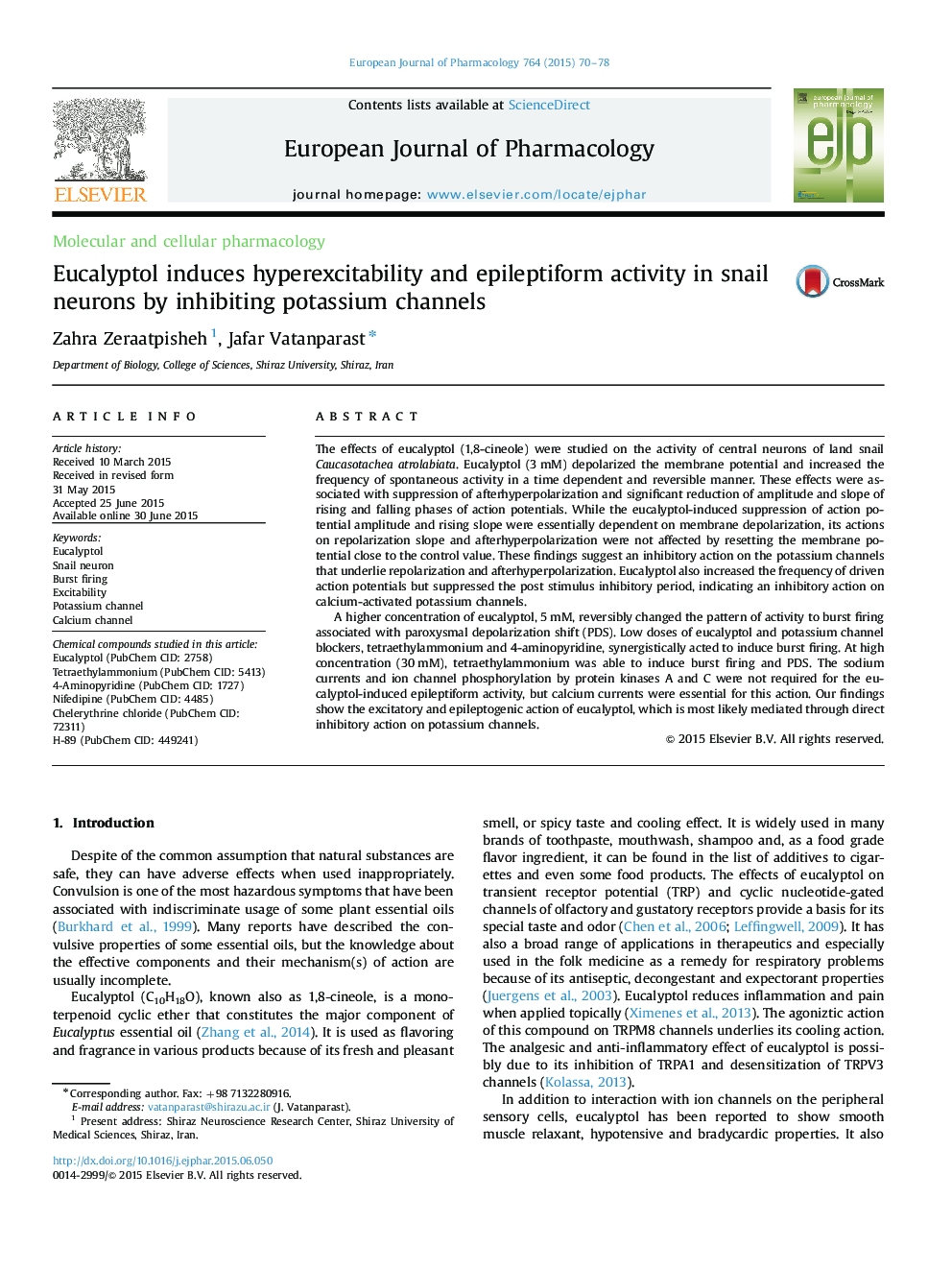| Article ID | Journal | Published Year | Pages | File Type |
|---|---|---|---|---|
| 2531321 | European Journal of Pharmacology | 2015 | 9 Pages |
The effects of eucalyptol (1,8-cineole) were studied on the activity of central neurons of land snail Caucasotachea atrolabiata. Eucalyptol (3 mM) depolarized the membrane potential and increased the frequency of spontaneous activity in a time dependent and reversible manner. These effects were associated with suppression of afterhyperpolarization and significant reduction of amplitude and slope of rising and falling phases of action potentials. While the eucalyptol-induced suppression of action potential amplitude and rising slope were essentially dependent on membrane depolarization, its actions on repolarization slope and afterhyperpolarization were not affected by resetting the membrane potential close to the control value. These findings suggest an inhibitory action on the potassium channels that underlie repolarization and afterhyperpolarization. Eucalyptol also increased the frequency of driven action potentials but suppressed the post stimulus inhibitory period, indicating an inhibitory action on calcium-activated potassium channels.A higher concentration of eucalyptol, 5 mM, reversibly changed the pattern of activity to burst firing associated with paroxysmal depolarization shift (PDS). Low doses of eucalyptol and potassium channel blockers, tetraethylammonium and 4-aminopyridine, synergistically acted to induce burst firing. At high concentration (30 mM), tetraethylammonium was able to induce burst firing and PDS. The sodium currents and ion channel phosphorylation by protein kinases A and C were not required for the eucalyptol-induced epileptiform activity, but calcium currents were essential for this action. Our findings show the excitatory and epileptogenic action of eucalyptol, which is most likely mediated through direct inhibitory action on potassium channels.
